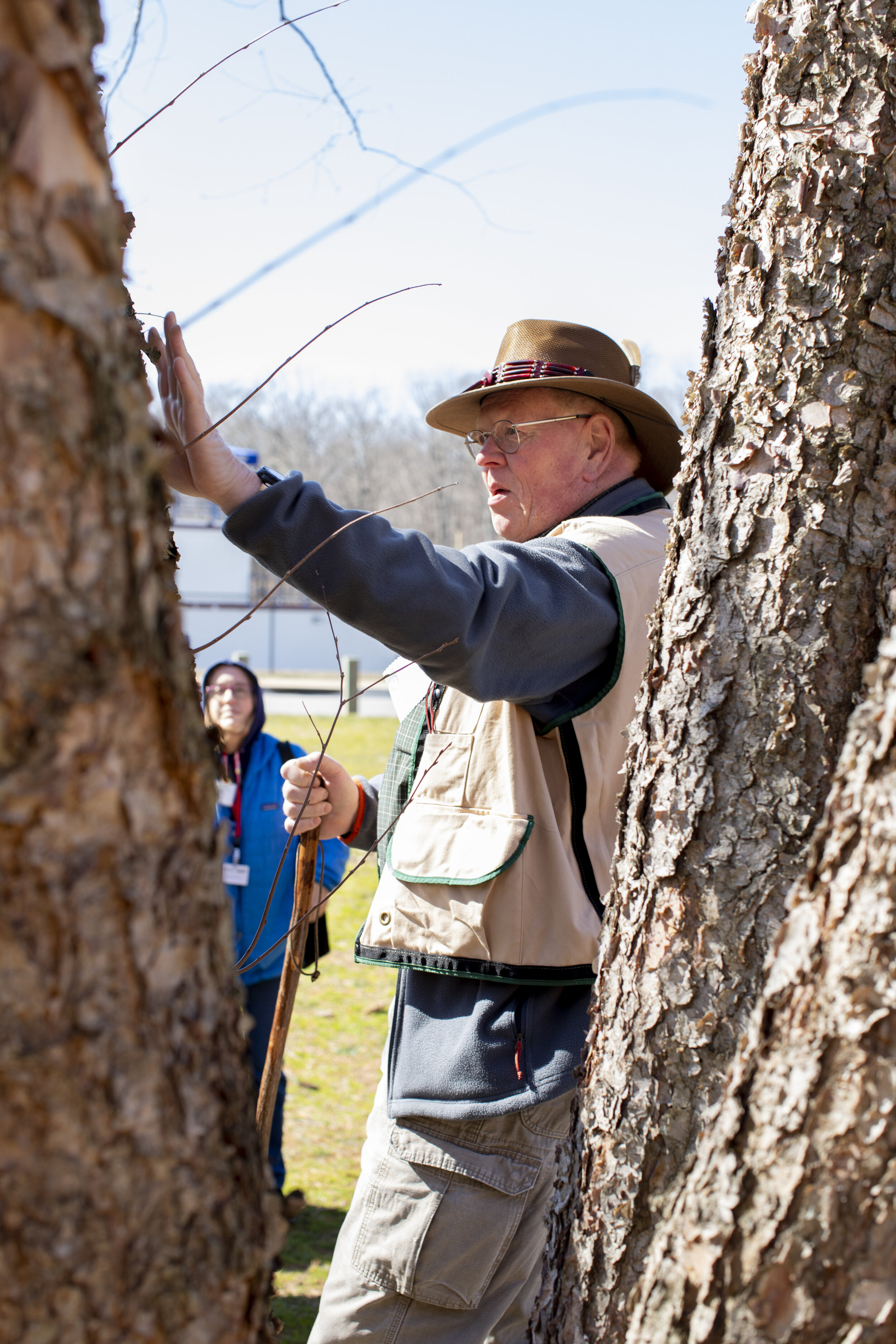October’s Native Maryland Plant
Salix nigra Marsh.
(SAY-liks NY-grah)
Common Name: Black Willow
The Chesapeake Conservation Landscaping Council (CCLC) has designated October as the first annual ‘Riparian Buffer’ month¹; the month to raise awareness and promote the sustainable practice of riparian buffers – it could not have come at a better time. Forested riparian buffers are one of the best ways to protect our waterways; they prevent erosion, reduce flooding, provide habitat for wildlife, create recreational opportunities, and filter pollutants. The last two ‘State of the Bay’ report cards² graded the Bay a D+ and in 2022 we’ll have our next report. I for one am anxious that it may dip into failing grade status, it’s hard coming back from an F, and even harder to imagine what it will mean for life in the Bay. It will take everyone’s effort to prevent this, but as Master Gardeners and Watershed Stewards, we know how to do it! Riparian buffers will play a major role.
My plan is to engage with my community, to plant a Salix nigra and other trees, along the shores of the river closest to my home, the Severn River. I’m aware that this tree is often used in riparian buffers, ‘areas of vegetation near a stream, usually forested, that shade and protect that stream from the impact of adjacent land use.’ Salix nigra are excellent at stabilizing embankments, they provide valuable habitat and are an early pollen source for pollinators. I’ve often seen them along the Baltimore-Annapolis trail where I ride my bike, it’s nice to stop and observe the wildlife that lives there. Planting trees in the fall is a wonderful way to spend a morning and planting a keystone³ species makes it even more rewarding.
If you’re not able to plant a riparian buffer perhaps you’ll still be able to plant a tree at home or in your community? Hopefully a canopy tree that can provide shade over an impervious surface, maybe even a keystone species that supports biodiversity in a big way. Whichever you choose, don’t let this October go by without being a part of the solution. So much life depends on it!
’ - https://www.chesapeakelandscape.org/riparian-buffer-month/
² - https://www.cbf.org/about-the-bay/state-of-the-bay-report/index.html
³ - A genera that ‘form the backbone of local ecosystems’ – Doug Tallamy, Nature’s Best Hope
~ Alison Milligan – Mstr. Gardener/Mstr. Naturalist/Mstr. Watershed Steward
Chesapeake Bay Landscape Professional (CBLP)









